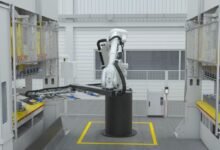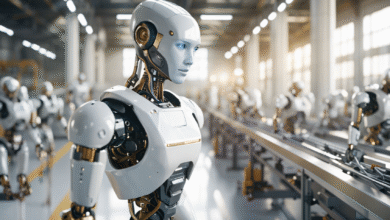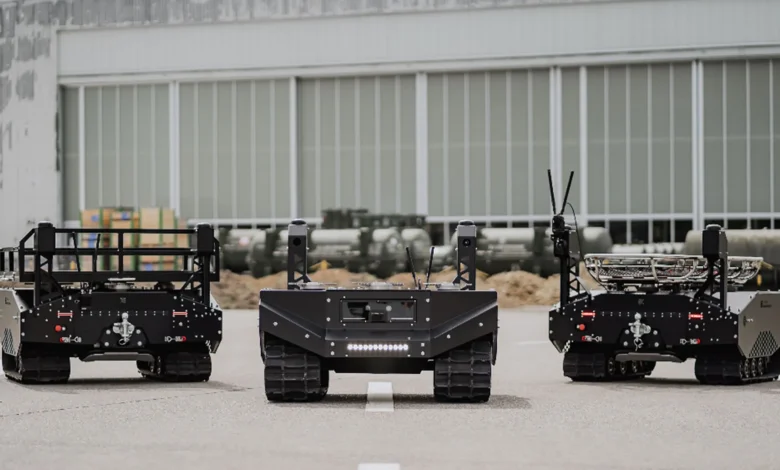
The landscape of modern warfare has undergone a dramatic transformation with the emergence of military and defense robotics. From unmanned aerial vehicles patrolling hostile territories to ground-based robots defusing explosive devices, robotic systems have become indispensable assets in contemporary military operations. As nations worldwide invest billions into developing sophisticated autonomous weapons systems, the intersection of artificial intelligence, robotics, and combat has created both unprecedented capabilities and profound ethical dilemmas that demand urgent examination.
Military and Defense Robotics represents more than just technological advancement; it symbolizes a fundamental shift in how conflicts are conducted, decisions are made, and human lives are protected—or potentially endangered. The global military robotics market has experienced exponential growth, with projections indicating the sector will reach approximately $24.6 billion by 2033. This surge reflects not merely financial investment but a strategic recognition that robotic warfare will define future military superiority.
However, beneath the promise of reduced casualties and enhanced precision lies a complex web of ethical considerations. Questions about accountability, autonomous decision-making in lethal scenarios, and the potential for algorithmic bias challenge our fundamental understanding of warfare’s moral boundaries. When machines gain the capability to identify, target, and eliminate threats without human intervention, we confront unprecedented philosophical territory. The debate surrounding lethal autonomous weapons systems has intensified, with international bodies, ethicists, and military leaders grappling with frameworks that balance technological progress against humanitarian principles.
This article examines the multifaceted world of military and defense robotics, exploring cutting-edge technologies reshaping modern combat while scrutinizing the ethical frameworks necessary to govern their deployment. From drone warfare innovations to underwater surveillance systems, from international regulatory efforts to artificial intelligence integration, we will navigate the technological marvels and moral complexities defining this pivotal moment in military history. Understanding these dynamics is essential for policymakers, defense professionals, technologists, and citizens concerned about warfare’s future trajectory.
The Evolution of Military Robotics Technology
Early Development and Historical Context
Military and Defense Robotics did not emerge overnight; its foundations trace back decades to rudimentary remote-controlled devices. Early unmanned systems served primarily reconnaissance purposes, with limited autonomy and restricted operational capabilities. The Cold War era witnessed initial experiments with robotic platforms designed for hazardous environments, though technological limitations prevented widespread adoption.
The true acceleration began in the late 20th century when microprocessor advancements, sensor miniaturization, and improved battery technologies converged. The first-generation military drones were essentially flying cameras, requiring constant human oversight for navigation and data collection. These primitive systems laid the groundwork for today’s sophisticated autonomous platforms capable of independent decision-making within defined parameters.
Contemporary Robotic Systems in Defense
Modern defense robotics encompasses an impressive array of platforms operating across multiple domains. Unmanned aerial vehicles (UAVs) now range from small tactical drones fitting in backpacks to high-altitude, long-endurance systems surveilling vast territories for extended periods. These aerial robots perform intelligence gathering, target acquisition, communications relay, and increasingly, direct combat roles.
Ground-based Military and Defense Robotics have evolved beyond simple bomb disposal units. Contemporary platforms include reconnaissance vehicles, autonomous supply convoys, and combat support systems. Some robotic platforms feature manipulator arms for explosive ordnance disposal, while others carry weapon systems for perimeter defense or assault operations. The versatility of these machines continues to expand as engineers integrate more sophisticated sensors and processing capabilities.
Naval and underwater robotic systems represent another critical dimension. Autonomous underwater vehicles conduct mine detection, submarine tracking, and intelligence gathering in maritime environments too dangerous or inaccessible for human divers. Surface vessels equipped with autonomous navigation capabilities patrol coastlines and protect naval assets, reducing crew requirements while maintaining operational effectiveness.
Artificial Intelligence Integration
The integration of artificial intelligence (AI) has revolutionized Military and Defense Robotics, transforming reactive machines into systems capable of learning, adapting, and making complex decisions. Machine learning algorithms enable robots to recognize patterns, identify threats, and optimize tactics based on accumulated experience. Computer vision systems process visual data in real-time, distinguishing friend from foe with increasing accuracy.
AI-powered defense systems can now coordinate multiple autonomous vehicles simultaneously, creating swarm tactics where dozens or hundreds of small drones operate as unified entities. These swarms overwhelm traditional defense mechanisms through sheer numbers and coordinated maneuvers, presenting challenges that conventional weapons systems struggle to counter. The autonomous decision-making capabilities embedded in these systems raise critical questions about human control and accountability.
Natural language processing allows Military and Defense Robotics to interpret verbal commands and respond appropriately, while predictive analytics forecast enemy movements and suggest tactical responses. The synthesis of these AI technologies creates systems approaching human-like situational awareness, though significant limitations remain in handling unexpected scenarios or ethical complexities.
Types of Military and Defense Robotics
Unmanned Aerial Vehicles (UAVs) and Combat Drones
Military drones represent the most visible and controversial category of defense robotics. Large platforms like the MQ-9 Reaper conduct long-duration surveillance and precision strikes, while smaller tactical drones provide infantry units with immediate overhead reconnaissance. The spectrum includes micro-drones small enough to fly through windows, medium-altitude systems for regional coverage, and high-altitude strategic platforms monitoring entire countries.
Combat drones equipped with missiles and guided munitions have fundamentally altered asymmetric warfare, allowing forces to eliminate high-value targets while minimizing friendly casualties. However, their deployment raises concerns about extrajudicial killings, civilian casualties from targeting errors, and psychological disconnection between operators and combat consequences. The proliferation of armed UAVs among both state and non-state actors presents escalating security challenges.
Ground Robots and Unmanned Ground Vehicles (UGVs)
Unmanned ground vehicles serve diverse military functions from logistics to direct combat. The PackBot and similar platforms have saved countless lives by investigating suspicious objects and disarming improvised explosive devices. Larger ground robots transport supplies across hostile terrain, reducing exposure for human convoy crews vulnerable to ambushes.
Emerging combat ground robots feature weapon mounts and autonomous targeting capabilities, though most systems currently require human authorization before engaging targets. These platforms provide mobile firepower while reducing risk to soldiers, particularly in urban warfare where corners, buildings, and confined spaces present constant threats. The development of legged robots capable of traversing rough terrain expands operational possibilities beyond wheeled or tracked vehicles.
Naval and Underwater Autonomous Systems
Unmanned maritime vehicles operate both on the surface and beneath the waves. Autonomous surface vessels patrol exclusive economic zones, conduct anti-piracy operations, and serve as sensor platforms for broader naval operations. Their endurance exceeds crewed ships while operating costs remain substantially lower, making them attractive for routine surveillance missions.
Underwater robots locate mines, map seafloors, and track submarine movements through acoustic signatures. Advanced models feature sophisticated sonar arrays and chemical sensors detecting trace elements from submarines’ cooling systems. These autonomous underwater vehicles (AUVs) venture into depths and durations impossible for human divers, expanding naval capabilities while reducing personnel risks.
Autonomous Weapons Systems and Loitering Munitions
Lethal autonomous weapons systems (LAWS) represent the most ethically contentious category. These systems possess capabilities to identify, select, and engage targets without direct human intervention. While fully autonomous weapons remain relatively rare, semi-autonomous systems with human oversight have become increasingly common.
Loitering munitions, sometimes called “kamikaze drones,” hover over battlefields searching for specific target types before self-destructing against them. Systems like the Israeli Harop can operate autonomously for hours, identifying radar emissions and destroying air defense systems. The line between remotely-piloted weapons and truly autonomous weapons continues to blur as AI capabilities advance.
Advantages of Military Robotics in Modern Warfare
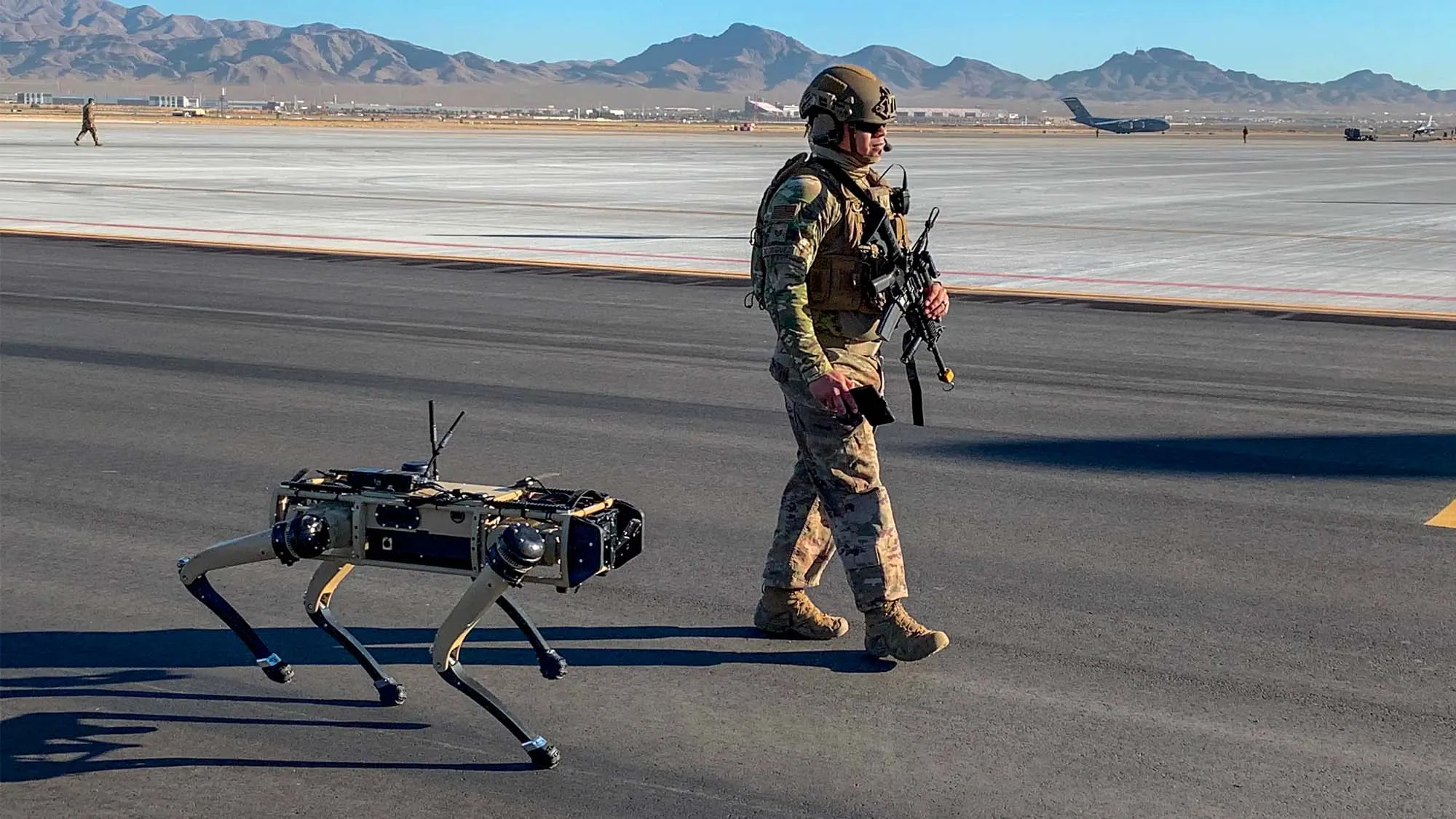
Reduction of Human Casualties
The primary argument supporting military robotics deployment centers on protecting human lives. Robotic systems can perform dangerous missions without risking soldiers’ lives—defusing bombs, entering contaminated zones, or conducting high-risk reconnaissance. This capability proves particularly valuable in counterterrorism operations where identifying threats before engagement significantly reduces casualties.
Unmanned platforms eliminate concerns about crew capture, reducing strategic vulnerabilities associated with hostage situations. When missions fail, material losses replace human tragedy, though this calculation raises ethical questions about warfare becoming too easy to wage when one’s own forces face minimal risk.
Enhanced Operational Capabilities
Military and Defense Robotics operate in environments hostile to human physiology. They function in extreme temperatures, toxic atmospheres, and high-radiation zones without degradation. Their endurance exceeds human limits—autonomous drones remain airborne for days, ground robots patrol indefinitely with periodic recharging, and underwater vehicles conduct week-long missions.
Robotic precision surpasses human capabilities in many tasks. Sensors detect threats invisible to human perception, targeting systems calculate ballistic trajectories instantly, and reaction times are measured in milliseconds. This enhanced performance translates into greater mission success rates and reduced collateral damage when systems function properly.
Cost-Effectiveness and Resource Optimization
Operating unmanned systems costs substantially less than maintaining equivalent crewed platforms. Personnel expenses—training, housing, healthcare, pensions—represent significant military budgets. Robotic alternatives eliminate most personnel costs while performing similar missions. A single drone operator can control multiple platforms sequentially, multiplying force projection without proportional manpower increases.
Logistics simplify dramatically with robotic forces. Machines require no food, water, or morale-sustaining amenities. Their supply chains focus solely on fuel, spare parts, and ammunition, streamlining deployment and sustainment operations. This efficiency allows militaries to maintain larger operational tempos with smaller support infrastructures.
Strategic Advantages and Deterrence
Nations possessing advanced Military and Defense Robotics capabilities gain strategic advantages over technologically inferior adversaries. The ability to project power through autonomous systems while minimizing political costs associated with casualties makes military action more politically feasible, though this dynamic raises concerns about lowering thresholds for conflict.
Robotic swarms and coordinated autonomous platforms present defensive challenges requiring significant investment to counter. This technological disparity creates deterrent effects similar to other asymmetric capabilities, potentially preventing conflicts through demonstrated overwhelming advantage.
Ethical Concerns and Challenges
Accountability and Responsibility Gap
The fundamental ethical challenge in autonomous weapons systems involves determining responsibility when machines make lethal decisions. Traditional accountability structures assign blame to commanders, operators, or soldiers who execute orders. When AI algorithms determine targets and authorize engagements autonomously, responsibility becomes diffused across programmers, manufacturers, commanders, and the technology itself.
This accountability gap creates legal and moral dilemmas. Can programmers be held criminally liable for unintended algorithm behaviors in combat? Should commanders face prosecution for decisions made by machines operating beyond their direct control? When autonomous robots commit what would constitute war crimes if performed by humans, existing legal frameworks struggle to assign responsibility appropriately.
Autonomous Decision-Making in Lethal Scenarios
Delegating life-and-death decisions to AI systems confronts core human values about the sanctity of life and moral agency. Proponents argue that autonomous weapons can make more rational, less emotional decisions than humans under combat stress. Opponents contend that removing human judgment from lethal force decisions strips away essential moral consideration that machines inherently lack.
The targeting algorithms within autonomous weapons systems must distinguish combatants from civilians, proportionate responses from excessive force, and military targets from protected sites. Current AI technology struggles with the contextual understanding necessary for these nuanced determinations. An algorithm might identify armed individuals without understanding they’re lawful police officers, or designate a school as a military target because enemy combatants temporarily occupy it.
Bias and Discrimination in AI Systems
Artificial intelligence systems inherit biases from training data, potentially embedding discriminatory patterns into Military and Defense Robotics. If facial recognition algorithms perform poorly on certain ethnic groups, autonomous targeting systems might misidentify civilians as combatants at different rates across populations. Such systematic bias could violate principles of distinction and non-discrimination fundamental to humanitarian law.
The opacity of complex machine learning models compounds this problem. Even developers often cannot fully explain why neural networks reach specific conclusions, creating “black box” decision-making that defies traditional oversight mechanisms. This lack of transparency makes identifying and correcting bias exceptionally difficult, particularly in classified military systems.
Proliferation and Asymmetric Warfare
The diffusion of Military and Defense Robotics extends beyond state militaries to non-state actors, criminals, and terrorists. Commercial drone technology requires minimal modification for weaponization, while autonomous capabilities become increasingly accessible through open-source software. This proliferation erodes state monopolies on advanced military force, enabling asymmetric threats that are difficult to counter.
Low-cost autonomous weapons empower weaker adversaries to challenge conventional military superiority. Swarms of inexpensive armed drones might overwhelm sophisticated but expensive defense systems through sheer numbers. This dynamic potentially destabilizes international security by reducing barriers to violent conflict and enabling attacks previously requiring substantial resources and expertise.
Psychological and Social Impact
The psychological distance created by robotic warfare may reduce inhibitions against using force. When military personnel operate unmanned systems from secure facilities thousands of miles from combat zones, the visceral reality of warfare’s consequences diminishes. This disconnection might lower thresholds for initiating conflicts or increase acceptance of casualty-producing actions.
Conversely, operators of lethal drones report significant psychological stress from observing target areas intimately before and after strikes, sometimes experiencing trauma comparable to that of traditional combat veterans. The unique nature of simultaneously experiencing domestic normalcy and participating in deadly combat creates psychological contradictions requiring better understanding and support structures.
International Law and Regulatory Frameworks
Geneva Conventions and Humanitarian Law
International humanitarian law, codified primarily in the Geneva Conventions, establishes fundamental principles governing warfare. These include the distinction between combatants and civilians, proportionality of force, and the necessity of military action. Autonomous weapons systems must comply with these principles, yet their ability to do so remains questionable given current technological limitations.
The principle of distinction requires Military and Defense Robotics to differentiate legitimate military targets from protected persons and objects. While computer vision and sensor fusion have improved dramatically, complex battlefield environments present scenarios where even advanced AI systems struggle with accurate identification. Hospitals, schools, and religious sites receive special protection, but autonomous targeting algorithms might not recognize these designations reliably.
Proportionality demands that anticipated military advantage outweigh expected civilian harm. This calculation requires judgment about military value, civilian presence, and acceptable risk factors involving subjective assessment that current artificial intelligence cannot reliably perform. The nuanced ethical reasoning underlying proportionality assessments may fundamentally exceed machine capabilities.
United Nations Initiatives and Debates
The United Nations has facilitated extensive discussions on lethal autonomous weapons systems through the Convention on Certain Conventional Weapons. Numerous nations advocate for preemptive prohibitions or strict limitations on fully autonomous weapons, arguing that machines should never make life-and-death decisions without meaningful human control.
Defining “meaningful human control” presents significant challenges. Some interpret this as requiring human authorization for each engagement, while others accept human supervision of broader operational parameters. The debate reflects deeper philosophical disagreements about acceptable human-machine relationships in warfare. A December 2024 UN General Assembly resolution on autonomous weapons received overwhelming support, with 166 nations voting in favor, signaling ga growing international consensus for regulatory action.
National Policies and Military Doctrines
Individual nations have adopted varying approaches to Military and Defense Robotics governance. The United States Department of Defense established ethical principles for artificial intelligence in 2020, emphasizing responsibility, traceability, reliability, and governability. These guidelines require human oversight of autonomous systems while allowing significant machine decision-making within defined parameters.
Other nations pursue different philosophies. Some prioritize technological advantages regardless of ethical concerns, while others advocate for complete prohibitions on autonomous weapons. This fragmentation creates coordination challenges and potential arms race dynamics where nations fear falling behind adversaries in Military and Defense Robotics capabilities.
Challenges in Enforcement and Compliance
Even with international agreements, enforcing compliance with autonomous weapons regulations presents substantial difficulties. Verifying whether systems operate with sufficient human control requires technical expertise and access to classified systems. The rapid pace of AI development means agreements risk obsolescence before implementation, as new capabilities emerge faster than diplomatic processes can accommodate.
The dual-use nature of Military and Defense Robotics complicates non-proliferation efforts. Technologies developed for civilian applications—commercial drones, AI software, sensor systems—easily adapt for military purposes. Controlling these underlying technologies without stifling beneficial innovation requires delicate balancing that international regulatory frameworks have not yet achieved.
Current Applications and Real-World Examples
Counter-Terrorism and Bomb Disposal
Explosive ordnance disposal (EOD) robots represent among the earliest and most successful Military and Defense Robotics applications. Platforms like the iRobot PackBot and TALON have investigated and neutralized thousands of improvised explosive devices in Iraq, Afghanistan, and other conflict zones. These robots feature manipulator arms, cameras, and sensors, allowing operators to examine suspicious objects, disrupt triggering mechanisms, and safely detonate explosives from protected positions.
The lives saved by bomb disposal robots number in the thousands, demonstrating clear humanitarian benefits from Military and Defense Robotics. These systems operate under complete human control, with operators making all significant decisions while the robot simply extends their physical presence into hazardous environments. This application model represents an ethical use case with minimal controversy.
Intelligence, Surveillance, and Reconnaissance (ISR)
Military drones excel at persistent surveillance, monitoring areas of interest for extended periods. The MQ-9 Reaper and similar platforms patrol conflict zones, providing real-time intelligence to ground forces and headquarters. Their long endurance—often exceeding 24 hours—allows continuous observation impossible with crewed aircraft.
Modern ISR drones employ sophisticated sensors, including electro-optical cameras, infrared imaging, synthetic aperture radar, and signals intelligence equipment. These systems track vehicle movements, identify weapon installations, and monitor communications across vast territories. The intelligence gathered shapes tactical decisions, strategic planning, and political assessments of evolving situations.
Border Security and Patrol Operations
Autonomous robots increasingly patrol national borders, detecting illegal crossings and smuggling activities. Tethered surveillance drones remain airborne indefinitely over border regions, while ground-based unmanned vehicles navigate patrol routes automatically. These systems reduce personnel requirements for routine surveillance while potentially improving detection rates through consistent monitoring.
Maritime patrol drones survey coastlines and exclusive economic zones, identifying unauthorized vessels and suspicious activities. Their lower operating costs compared to crewed patrol boats enable more comprehensive coverage, though they currently supplement rather than replace human-operated vessels for enforcement actions.
Force Protection and Base Security
Military installations employ robotic sentries for perimeter security, using sensors and cameras to detect intrusions. Some systems feature non-lethal deterrents like spotlights and warning sounds, while others integrate with broader security networks, alerting human guards to threats. These applications reduce manpower requirements for routine security tasks while maintaining or improving vigilance.
Counter-drone systems represent a growing application as small commercial drones present security risks to military facilities. Autonomous detection networks identify approaching drones and coordinate responses ranging from jamming communications to physical interception. This cat-and-mouse dynamic between attacking drones and defensive systems continues evolving rapidly.
The Future of Military and Defense Robotics
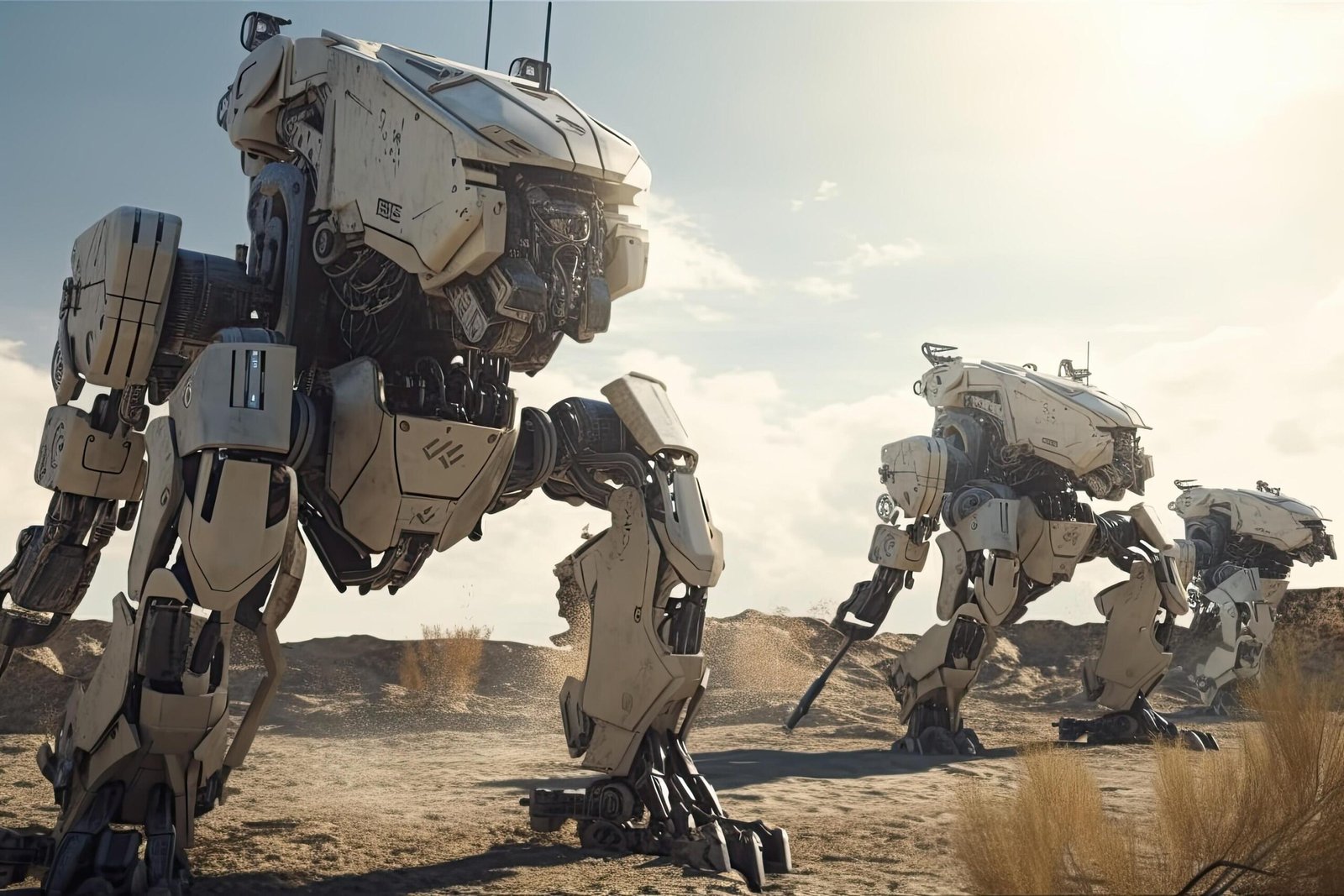
Emerging Technologies and Innovations
The trajectory of Military and Defense Robotics points toward increasing autonomy, sophistication, and proliferation. Quantum computing promises to revolutionize AI capabilities, enabling autonomous systems to process vastly more information and make more complex decisions. Advanced materials will produce lighter, stronger, and more durable robotic platforms with enhanced performance characteristics.
Biotechnology integration may create hybrid systems combining biological and artificial components. Brain-computer interfaces could allow more intuitive control of robotic units, while biological sensors might detect threats through chemical or biological markers. These convergences blur lines between natural and artificial, organism and machine, raising unprecedented ethical questions.
Swarm intelligence algorithms will enable coordination among thousands of small autonomous platforms, creating emergent behaviors more sophisticated than individual capabilities suggest. These swarms might autonomously organize into formations, distribute tasks among units, and adapt tactics in response to changing conditions—all without centralized control or human intervention.
Hypersonic and Space-Based Systems
Military and Defense Robotics expands beyond terrestrial environments into space. Autonomous satellites conduct reconnaissance, communications relay, and potentially orbital warfare missions. The development of space-based weapons systems capable of autonomous operation introduces new domains for robotic conflict with global implications.
Hypersonic vehicles traveling at speeds exceeding Mach 5 present targeting and defense challenges requiring autonomous response systems. Human reaction times prove insufficient for engaging such fast-moving threats, necessitating AI-controlled defenses that identify and neutralize hypersonic weapons autonomously. This technological arms race between offensive and defensive autonomous systems will likely accelerate significantly.
Human-Robot Teaming and Augmentation
Rather than replacing human soldiers, future military robotics may focus on augmentation and collaboration. Exoskeleton systems enhance strength and endurance, while heads-up displays integrate information from autonomous sensors and AI assistants. These human-robot teams combine human judgment and adaptability with machine precision and processing power.
Semi-autonomous squadmates—robotic units accompanying human soldiers—will carry equipment, provide covering fire, and conduct hazardous point missions. These systems operate under human supervision but handle tactical decisions autonomously within defined parameters. The collaboration model preserves meaningful human control while leveraging robotic capabilities.
Ethical AI Development and Responsible Innovation
Growing recognition of ethical challenges drives efforts toward responsible Military and Defense Robotics development. Research into explainable AI aims to make algorithmic decision-making transparent and auditable. Value alignment techniques seek to embed ethical principles directly into autonomous systems, ensuring machine decisions reflect human values.
International cooperation on AI safety standards for military applications could establish technical requirements ensuring adequate human oversight. Mandatory testing protocols might verify that autonomous weapons comply with international humanitarian law before deployment. These technical safeguards complement legal and policy frameworks to create comprehensive governance systems.
Balancing Innovation with Ethical Responsibility
Developing Robust Oversight Mechanisms
Effective governance of Military and Defense Robotics requires multi-layered oversight combining technical, legal, and ethical assessment. Review boards evaluating autonomous systems before deployment should include diverse expertise—engineers understanding technical capabilities, lawyers analyzing legal compliance, ethicists examining moral implications, and military professionals assessing operational contexts.
Continuous monitoring after deployment proves equally essential. Autonomous weapons systems should log decisions for post-mission review, enabling identification of problems and systemic issues. When AI systems make questionable decisions, thorough investigations should determine whether problems stem from programming errors, inadequate training data, or flawed operational parameters.
Maintaining Human Control and Dignity
Preserving human agency in lethal decision-making remains paramount. While autonomous systems may identify and track targets, human operators should authorize engagements except in clearly defensive scenarios. This “human-in-the-loop” or “human-on-the-loop” approach maintains meaningful human control while leveraging robotic capabilities.
The principle of human dignity requires treating warfare’s moral weight seriously. Even when Military and Defense Robotics reduce friendly casualties, the decision to take human life carries profound significance that machines cannot appreciate. Maintaining human involvement acknowledges this gravity and preserves accountability essential for just warfare.
International Cooperation and Arms Control
The global nature of Military and Defense Robotics development demands international cooperation. Arms control agreements could limit the most dangerous autonomous weapons while allowing defensive and humanitarian applications. Transparency measures—sharing information about robotic systems’ capabilities and deployment—would build confidence and reduce miscalculation risks.
Collaborative research on AI safety and ethical robotics could establish technical standards adopted globally, similar to nuclear safety protocols. International bodies might certify that autonomous systems meet humanitarian law requirements before approval for military use. These cooperative approaches require trust and shared commitment to responsible innovation.
Public Engagement and Democratic Oversight
Democratic societies should involve citizens in decisions about Military and Defense Robotics development and deployment. Public discourse informed by accurate information about capabilities, limitations, and risks enables meaningful democratic participation. Transparency about autonomous weapons programs—within security constraints—allows citizens to exercise oversight through political processes.
Educational initiatives explaining AI technology, robotics capabilities, and ethical implications could elevate public understanding. An informed citizenry better evaluates policy proposals and holds leaders accountable for military robotics decisions affecting security, ethics, and human rights.
More Read: Computer Vision Technology: Applications and Innovations
Conclusion
Military and defense robotics stands at a critical inflection point where technological possibility intersects with ethical imperative. The remarkable capabilities of autonomous weapons systems, AI-powered platforms, and robotic warfare technologies offer genuine advantages—protecting soldiers, enhancing precision, and expanding operational possibilities. Yet these same innovations present profound challenges to accountability, humanitarian law compliance, and human dignity in warfare.
As Military and Defense Robotics continue their rapid evolution, the international community must establish robust governance frameworks that balance innovation with responsibility. Success requires technical safeguards ensuring meaningful human control, international cooperation creating universal standards, and sustained ethical reflection on warfare’s fundamental nature.
The choices made today regarding autonomous weapons, lethal robotics, and AI in defense will shape not merely military capabilities but the moral character of 21st-century conflict. By prioritizing transparency, accountability, and human-centered values alongside technological advancement, societies can harness military robotics benefits while preserving essential ethical principles that distinguish justified defense from unrestrained violence.

